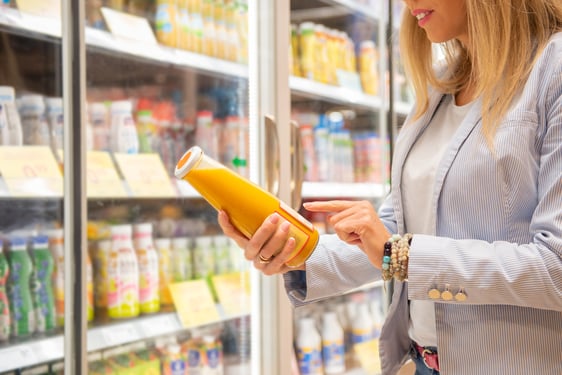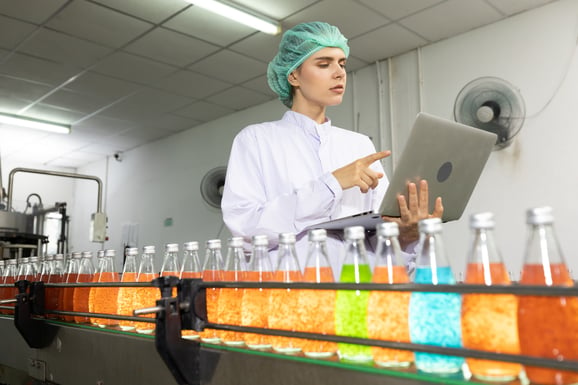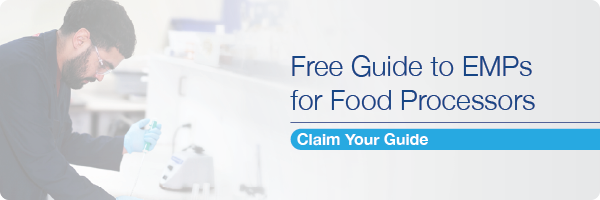As product label claims play an increasingly important role in informing consumer purchasing decisions, manufacturers are pressed to develop products – and food label claims – that best position their food and beverage products in the market. For some companies, the manufacturing process drives the development of claims. For others, the desire for their product to bear a certain label claim drives the manufacturing process.
From processing claims such as non-GMO, organic, and allergen-free, to health claims on food labels that indicate products or their ingredients may play a role in affecting the structure or function of the body, choosing the appropriate food claim is advantageous.
But there are regulations to consider. In this blog, we review the U.S. regulations for label claims to help your products stand out on store shelves while meeting regulatory requirements.
Label Claims Must Be Truthful and Not Misleading
Ensuring that a label claim is truthful, not misleading, and substantiated or scientifically backed is important for the food and beverage industry. A false or misleading label claim presents both a regulatory challenge and a potential health hazard to consumers.
The U.S. Food and Drug Administration (FDA) requires scientific substantiation of health claims on food and beverage labels and marketing materials, while the Federal Trade Commission (FTC) additionally requires claims substantiation for product labeling and advertising under it’s Deception Policy.
Food manufacturers that make a false or misleading label claim may at best be required by regulatory authorities to redesign product labels. In the most egregious cases, companies may run the risk of causing consumer harm and face stiff penalties.
Transparency is important when developing food label claims. Testing may play a role in ensuring these claims are substantiated, truthful, and not misleading – as well as legally allowable under U.S. law.
 Consumers often turn to the product label claim to inform food and beverage purchases.
Consumers often turn to the product label claim to inform food and beverage purchases.
What Do U.S. Regulations Say About Food and Beverage Label Claims?
Nutrient Content Claims
The FDA regulates food labeling, including labeling for beverages, in the Code of Federal Regulations 21 CFR Part 101, Food Labeling.
Here, manufacturers and labelers can access FDA’s requirements for appropriate claims substantiation. In 21 CFR 101.13 and 21 CFR 101 Part D, for example, specific instances are discussed for when direct statements can be made about the level (or range) of a nutrient in the food, known as Nutrient Content Claims.
Examples of Nutrient Content Claims include…
21 CFR 101.54
- “Good source”
- “High”
- “High potency”
- “More”
21 CFR 101.56
- “Light”
- “Lite”
21 CFR 101.60
- Calories
21 CFR 101.61
- Sodium
21 CFR 101.62
- Fat
- Fatty acids
- Cholesterol content
Implied Nutrient Content Claims
Part D of 21 CFR also discusses implied nutrient content claims (Part 101.65).
Implied nutrient content claims describe a food or ingredient that is either present in a certain amount, such as “high in…” or absent, and/or suggests that the food, because of its nutrient content, may be useful in maintaining healthy dietary practices in conjunction with an explicit claim or statement about a nutrient. “Healthy, contains 3 grams (g) of fat" is one such example.
Health Claims on Food Labels
Creating health claims on food and beverage labels is another area that can be tricky for food and beverage manufacturers and labelers to understand.
21 CFR 101.14 and 21 CFR 101 Part E contain information on allowable health claims, including when statements, symbols, and vignettes that suggest a relationship between the presence or level of a substance in the food and a disease or health-related condition may be used.
Health claim symbols include, for example, hearts indicating that a product is “heart healthy” and/or a “heart” in the labeling.
FDA has very specific requirements for when and how health claims on food labels may be used, including the disease risk and potential benefits of the food or ingredient. Here’s a look at a few important regulations.
Calcium and Vitamin D Health Claims on Food Labels
Health claims are authorized for calcium and vitamin D for a reduction in the risk of osteoporosis (Part 101.72).
- Products including a health claim for calcium and Vitamin D must make clear the importance of adequate calcium intake, or when appropriate, adequate calcium and vitamin D intake, throughout life, in a healthful diet, as an essential component for reducing osteoporosis risk.
- However, the claim must not imply that intake of calcium (and Vitamin D) are the only recognized risk factors for the development of osteoporosis and must also not attribute any degree of osteoporosis risk reduction to the intake of calcium alone or calcium and vitamin D throughout life.
Additional Allowable Health Claims on Food Labels
The FDA has authorized a number of health claims, including the following (21 CFR 101 Part number is given in parentheses):
- Dietary lipids and cancer (101.73).
- Sodium and hypertension (101.74).
- Dietary saturated fat and cholesterol and risk of coronary heart disease (101.75).
- Fiber-containing grain products, fruits, and vegetables and cancer (101.76).
- Fruits, vegetables, and grain products that contain fiber, particularly soluble fiber, and risk of coronary heart disease (101.77).
- Fruits and vegetables and cancer (101.78).
- Folate and neural tube defects (101.79).
- Dietary noncariogenic carbohydrate sweeteners and dental caries or tooth decay (101.80).
- Soluble fiber from certain foods and risk of coronary heart disease (CHD) (101.81).
- Soy protein and risk of coronary heart disease (CHD) (101.82).
- Plant sterol/stanol esters and risk of coronary heart disease (CHD) (101.83).
Manufacturing, Claims Substantiation, and Transparency
Food label claims are big business, and so are the verification steps behind them.
In some cases, companies choose to outsource laboratory food testing for independent claims substantiation as an added confirmation of scientific verification and substantiation.
For example, as manufacturers of packaged foods and beverages turn to High Pressure Processing as a method of extending product shelf-life, they may seek to use the claim “preservative free.” However, because High Pressure Processing degrades heat labile nutrients, it will be necessary for food firms to conduct a nutrient quantity laboratory assessment to develop a nutrition facts panel.
Allergen-free claims as well should be verified to ensure supplier and manufacturing systems fully eliminate the introduction of allergens, including from cross-contamination.
Our regulatory consulting arm, EAS Consulting Group (a Certified Group company), can review your labels and help navigate the regulatory landscape so you maintain compliance.

Laboratory testing is essential to confirm food and beverage label claims based on manufacturing processes.
Food and Beverage Product Testing
Laboratory testing is essential for food and beverage manufacturers, particularly when developing accurate nutrient content claims, nutritional facts panels, and when justifying use of FDA allowable health claims.
However, laboratories themselves must also ensure due diligence of operations that are commensurate with Good Laboratory Practices, follow applicable ISO accreditations such as ISO 17025, and use validated testing methods based on matrices.
Laboratories must be able to test for the various components included on a food and beverage product label, including…
- Calories
- Carbohydrates
- Vitamins
- Minerals
- Amino acids
- Enzymes
- Fats
- Fatty acids
- Oils
- Preservatives
- Allergens
That requires expertise in chemistry, use of validated methods and highly technical instrumentation, as well as the scientific expertise to run the tests.
If you need lab testing to substantiate your claims, reach out to Certified Laboratories or Food Safety Net Services today.
Shelf-Life Testing Helps Set an Expiration Date
Laboratory testing is also required to determine the product’s shelf-life to print a “best used by,” “sell by,” or expiration date.
Expiration dating is a required component of FDA-compliant food and beverage labels. Product stability, or shelf-life can be affected by numerous environmental conditions as well as the type of product packaging and closure systems, so it is important to choose a laboratory capable of conducting numerous simultaneous tests that can simulate a variety of conditions.
Tips for Choosing the Right Lab Partner
Check your laboratory’s qualifications, including certifications and accreditations. Ask about the types of methods they use, their method validation process, their laboratory capacity, and turnaround time so you can ensure their capabilities meet your needs.
Finally, ask to see a sample of their Certificate of Analysis (COA) so you’ll understand what your final product will look like. And ask questions about anything on the COA or about the laboratory’s qualifications that you do not understand.
In the FDA’s eyes, substantiation of any label claim is essential prior to printing them on your product’s label.
Contact us if you need lab testing to substantiate your label claims.


